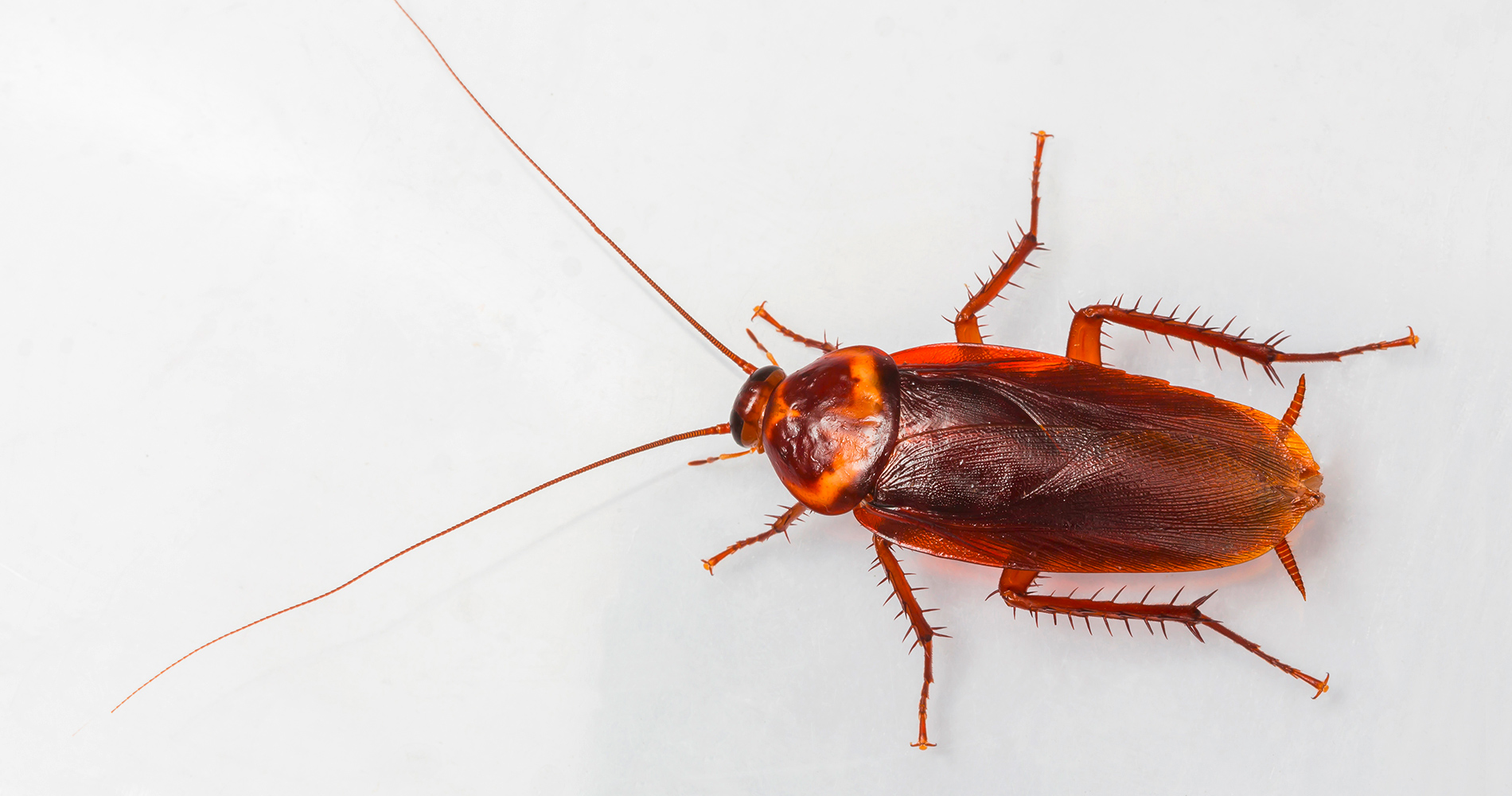American cockroach
(Periplaneta americana)

Biology:
The American cockroach is the largest cockroach found in Germany, with a body measuring 28 to 40 mm. It is light to mid reddish-brown with rusty yellow bands on the pronotum. Both sexes have wings, but they are only capable of gliding. The nocturnal creatures can run quickly and climb very well. Like all cockroaches, they deposit their eggs in egg sacks, known as oothecae.
They carry the egg sacks, containing 15 to 20 eggs, around for just a few days, then they stick them in sheltered areas – and cover them if possible. The young hatch after approximately 1 to 2 months. The life expectancy of 1 to 1.5 years for the adult creatures is relatively long.
The American cockroach is extremely thermophilic and very demanding in terms of temperature and humidity. In Germany, you can only find them in warm and humid areas – predominantly in zoological gardens, greenhouses, indoor swimming pools, etc., which fulfil these conditions. At temperatures below 15 °C, they can no longer develop oothecae, meaning that they cannot hibernate outside.
Damage:
Cockroaches (also referred to as roaches colloquially) are omnivores and will go for anything nutritious that they can reach. Their menu includes waste, stored products and any type of food, but also faeces and materials such as leather, textiles and paper. They prefer to ingest soft substances and those containing water. In greenhouses, the American cockroach can cause a huge amount of damage by feeding on seedlings, blossoms and fruits. With this very unfussy diet, cockroaches pose a huge danger to the health, as they can contaminate food and transmit pathogens and mould spores. They can therefore be vectors of anthrax, salmonella, tuberculosis and worm infections. They also play a key role as causes of allergies (cockroach allergens in faeces, for example) and are therefore considered to be a real pest in terms of health.
